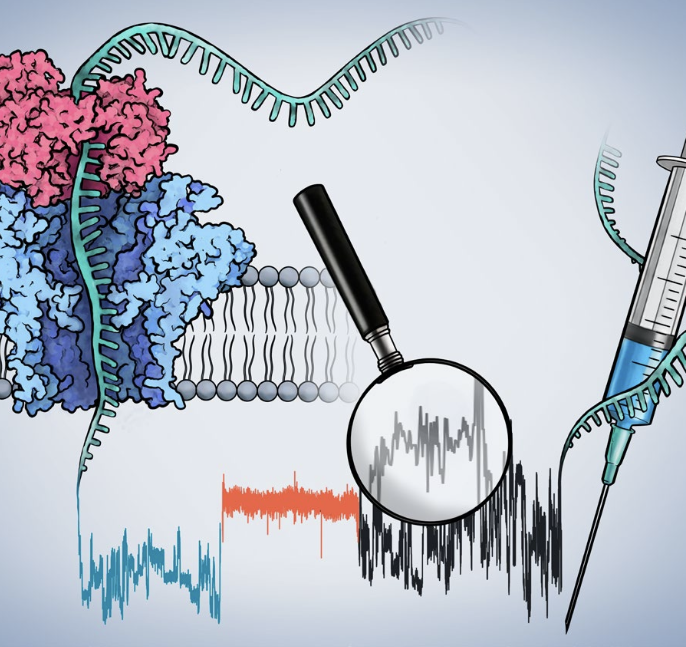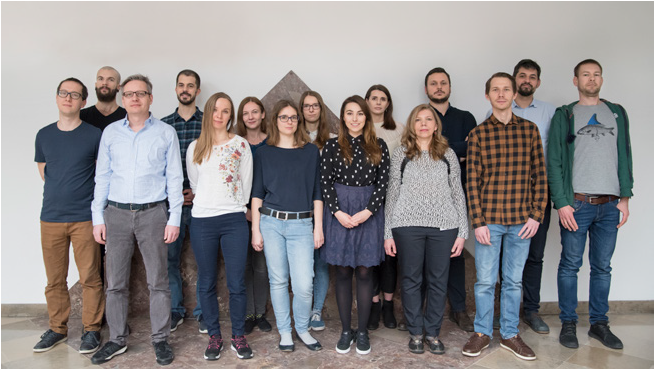We are molecular biologists who are trying to understand how the stability of mRNA is regulated. We have recently discovered a previously overlooked mechanism that increases the stability of both naturally produced and therapeutic mRNA (like mRNA vaccines), operating only in specific cell types and tissues. In the future, we plan to understand this new mechanism better and exploit it to design more effective mRNA-based therapeutics.
Research Summary
Although mRNA degradation has been studied for years, and the major decay pathways conserved between eukaryotes are already established, we know very little about how these are integrated in vivo. The stability of mRNA is mainly controlled by the dynamics of 3’ terminal poly(A) tails initially synthesized in the nucleus. At the same time, the analysis of poly(A) tails is challenging as for any other homopolymeric tract. In the lab, we implemented direct RNA sequencing on nanopores to study the metabolism of poly(A) tails. This methodology enables us to look more comprehensively at the dynamics of poly(A) tails in vivo. We discovered that a metazoan-specific family of cytoplasmic poly(A) polymerases (TENT5) that by extending mRNA's tails play crucial roles in mammalian physiology. TENT5B, C, and D participate in gametogenesis, while TENT5A regulates collagen expression in osteoblasts. In immune cells, TENT5A and C enhance the expression of innate immunity effector proteins. Notably, we have recently described the unexpected role of TENT5A in the regulation of the stability of anti-COVID19 mRNA vaccine.
Scientific Impact
- Description of TENT5 cytoplasmic poly(A) polymerases as important regulators of physiological processes.
- Discovery that TENT5A re-adenylates and stabilizes anti-SARS-CoV-2 mRNA vaccine, enhancing antigen production and vaccine efficacy.
Future Goals
Within the framework of the recently-funded ERC Advanced Grant ViveRNA, we plan to comprehensively study the stability of both endogenous and therapeutic mRNA in vivo. We will enhance the accuracy of the methods used to determine the properties of mRNAs, especially computational protocols for the analysis of poly(A) tails. These, combined with carefully designed transgenic mouse models, primary cell cultures, and synthetic biology approaches, should, in the future, enable the design of next-generation mRNA therapeutics. In parallel, together with our collaborators from the Virtual Research Institute, we are actively working on improving mRNA-based therapies using chemical approaches and applying them for cancer immunotherapy.
Collaborations
Our lab coordinates a large Virtual Research Institute project, the Horizon for Excellence in messenger RNA applications in immunoOncology (HERO). Within HERO, we collaborate with Marcin Nowotny and Marta Miączyńska from our Institute, Jacek Jemielity, and Joanna Kowalska from the University of Warsaw, as well as Dominika Nowis and Jakub Gołąb from the Warsaw Medical University. At the same time, we have several other ongoing collaborations. These mainly focus on mRNA stability and include Magdalena Dziembowska (University of Warsaw), Bertrand Séraphin (IGBMC, France), Agnieszka Tudek (IBB Warsaw), Torben Jensen (Aarhus University), and Greg Kudla (HGU, UK).
Comment
"We are very intrigued by the fact that although the machinery involved in mRNA metabolism is the same everywhere, there is high variability in mRNA stability and poly(A) tail dynamics in all tissues. This is reflected, for instance, by high differences in the average lengths of poly(A) tails depending on the cell type. Understanding of this variation is particularly important in the context of future applications for mRNA-based therapeutics," says Andrzej Dziembowski, PhD, Professor

We aim to use nanopore sequencing to identify factors that affect mRNA stability. This will allow the design of better therapeutic mRNAs to help fight diseases. Illustration by Natalia Gumińska




